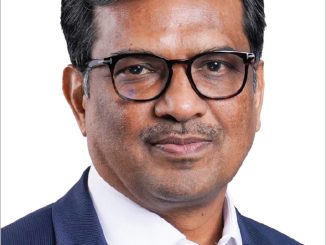 India has accelerated its energy transition and decarbonisation journey. The power sector has made rapid strides in this direction with the adoption of advanced technologies and digitalisation. Siemens looks to tap emerging opportunities in this space and make relevant technologies available for the Indian power sector. Excerpts from a recent interview with Gerd Deusser, executive vice-president, energy, Siemens Limited…
India has accelerated its energy transition and decarbonisation journey. The power sector has made rapid strides in this direction with the adoption of advanced technologies and digitalisation. Siemens looks to tap emerging opportunities in this space and make relevant technologies available for the Indian power sector. Excerpts from a recent interview with Gerd Deusser, executive vice-president, energy, Siemens Limited…
What is your perspective on the performance of the power sector in the past 12 months?
In India, we still have a very large amount of power that is generated via coal. The trend is expected to continue over the next couple of years. However, over the past two years, there has been a downward trend, in the sense that no new power plants are getting tendered. There was one that recently got tendered, and maybe there will be two or three more that will get tendered.
The government’s initiative to focus on demand growth and on the 3Ds – decarbonisation, decentralisation and digitalisation – is becoming visible. The National Infrastructure Pipeline will also support and channelise government spending into the power sector.
The government has announced the Green Hydrogen Policy. The first phase is focused on the supply side and the second phase on the demand side. The policy will foster decarbonisation. Thus, a lot of developments are taking place, but we will see how those pan out over the next couple of years and how we at Siemens can support that.
With respect to energy transition, how do you think we have performed in the past one to two years? What are the new technologies and solutions that can help fast-track India’s decarbonisation plans?
I think India has performed well as the right measures have been put in place such as the National Infrastructure Pipeline and the Green Hydrogen Policy. Broadly speaking, we need to reduce CO2 extraction to support the 1.5 °C goal globally. There are three parts that contribute to it. One is the energy part or the power generation part, which is contributing around 45 per cent to the CO2 emissions. The industry may be contributing 30 per cent and mobility around 25 per cent. For all of these three elements, there is technology available.
In power generation, we have the power of digitalisation. We have data available to us where we can build digital twins for these existing coal-fired power plants and make them more flexible so that they can ramp up and down faster, which will improve their efficiency. Therefore, we can save on burning coal and reduce CO2 emissions. On the industry side, we have the technology that can extract heat from a cement plant, which otherwise gets released into the environment. The captured heat can be put into a steam turbine to make electricity. On the mobility side, the country is moving from diesel locomotives to electric locomotives. And if we can generate that electricity from sustainable sources, I think that would help.
The overarching technology that is available to all the three sectors is hydrogen. It can be easily transported from one part of the country to another, for the feedstock, fertiliser and refinery industries, or we can burn it in a turbine to generate electricity, or use it in a fuel cell. The other technology that is available is energy storage. A battery energy storage system can store the excess renewable energy generated during the day for use during night hours. Fuel cell is another technology. In view of the government’s target to reach 500 GW of non-fossil fuel-based capacity, I believe grid stabilisation is an area that needs a technology boost.
While these technologies are available, we need to get the economics right because at this point in time, these are more expensive than the traditional solutions.
With the decentralisation of energy generation and new players coming in, do you see any challenges from a technology provider’s perspective? How can these be addressed?
We need to ensure affordable and secure supply of energy, which is also sustainable. If all that comes from one source centrally, it is much more difficult to handle. If we decentralise, it is helpful because you can go to different parts of the country and do it. We have solutions that can generate energy in a smaller environment with wind and solar, may be charge a small battery and also power a fuel cell. We need smart grids in this environment that can link all this together, make sure that the grids talk to each other, and minimise losses as much as possible.

What are some of the key digitalisation trends that are expected to gain traction in the next couple of years? What are the challenges that you see in their adoption?
Digitalisation is coming up fast. Now, we can put sensors around the entire power plant and extract operational data and analyse it. We can simulate certain operational conditions on the computer to find out when the plant should be shut down, when it should be ramped up and down and when it is time for maintenance. Today, we are not required to plan fixed maintenance cycles, we do it when required, and this can improve the efficiency of the entire plant. It is relatively less costly, but benefits can be large.
The challenge lies in the adoption by industries. We have been trying to adopt digital twins for two to three years, and we need to find a better method to inform our customers. One of the main reasons is that it is not driven top down, it is driven bottom up, as the operational people get the benefit. Unless it is driven top down, I think it will be a challenge to implement these digitalisation models.
What is the outlook for the power sector? How do you see this sector shaping up in the near to medium term?
Power demand has doubled since 2000, and I would expect it to accelerate even further because we have a lot of elements coming in. For example, in the mobility sector, if all the trains in India are changed from diesel to electrical source, it will create a lot of demand. Then, charging and electrification in the transport sector will bring in a lot of demand. A lot more on the industrial side will be automated, which will create more demand. The demand would only go up for the foreseeable future and even beyond. We just have to make sure that we stay in the trilemma and provide affordable energy and security of energy supply while being sustainable as well. Today, we have an installed capacity of about 350 GW in India, and over 200 GW is used per day. If we expect the installed capacity to reach 800 GW in 2030, with the same ratio of demand, we will have 500-600 GW to use every day. This is even more growth within a much shorter time frame than from 2000 to now. So, I am very optimistic about the demand side.
What are your top priorities for Siemens going forward?
Our priority is to make all the technologies available in India. While the technologies are available even today, we are trying to indigenise them, because not every technology that is globally available will fit in India. The second priority is to build a skilled workforce that can cater to these technologies with constant review and adoption. The third priority is to make efficient use of current solutions. Coal-fired power plants will stay for the next couple of years. So we have to make sure that the existing plants continue to function in the best way. This is absolutely a priority because you cannot only build on future technologies, you also need to keep delivering what you are delivering today.



